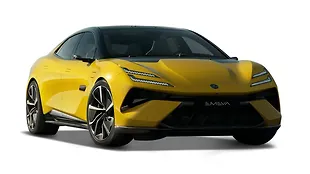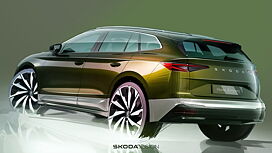Nissan Intelligent Mobility
We read and hear so much about driver assist technologies, autonomous and hybrid cars, we think it’s a recent development. But the fact is that this technology has been evolving from as early as 1996 when ABS became standard. Intelligent Mobility has always been about making the driving more confident and thereby making it an easier experience and that has been happening for a while now. The only difference is that, of late, the technology has taken rapid strides thanks to manufacturers like Nissan who have decided to commit and invest for the future. The need for autonomous technology has risen also from global social issues like global warming, congestion and traffic accidents. And Nissan thinks it has the answer to these issues through Nissan Intelligent Mobility.

Nissan aims to make its future cars more exciting through three important factors, namely Nissan Intelligent Driving, Nissan Intelligent Power and Nissan Intelligent Integration. With Intelligent Driving, Nissan will offer customers more confidence through enhanced safety, control, and comfort for everyone on board. Intelligent Power will make driving experience more exciting by providing a holistic approach to achieving zero-emission mobility by making internal combustion engines more efficient and putting more advanced technologies into electric vehicles. With Intelligent Integration, Nissan will help shape a sustainable ecosystem by enabling cars to interact with people, other cars and road infrastructure. This approach will eventually lead to remote vehicle operation, reduced traffic jams, more efficient car-sharing, and improved energy management.

And Nissan has already applied the technology in some of their cars which have already hit the markets. The Nissan e-POWER and the Serena along with the extremely popular Leaf have already created waves as far as Autonomous technology is concerned and you can read about them here. And Nissan’s Autonomous driving technology is already being used in congested single lanes since 2016. It will now move to highways and multiple lanes by 2018 and the most difficult city intersections by 2020. However this is confined to Europe, China, Japan and US only for now. But what about India?

Now there is a scope for self-driven cars to appear on Indian roads because the technology is likely to enter the market through tightly restricted geographical regions, or in specific-use cases. For example, self-driving cars may first debut on the road between an airport and a central business district in a city. However, one cannot expect a large number of autonomous cars to hit the roads immediately. The primary reason being that the Artificial Intelligence technology available today is nowhere near sophisticated enough to handle the chaotic driving scenario in India. The most difficult aspect is detection of traffic signals by the AI. The distance from the signal to the car being the primary issue - a problem which has been made worse in India thanks to sign boards erected in front of signals or signals which do not function at all.

While India might not be ready for Autonomous cars as of now, it does make for an ideal testing ground considering the extremely difficult driving conditions. Autonomous vehicles aside, India is definitely ready for technology like e-POWER and Hybrid systems (which are already plying on Indian roads) and we hope Nissan brings it in soon.
























